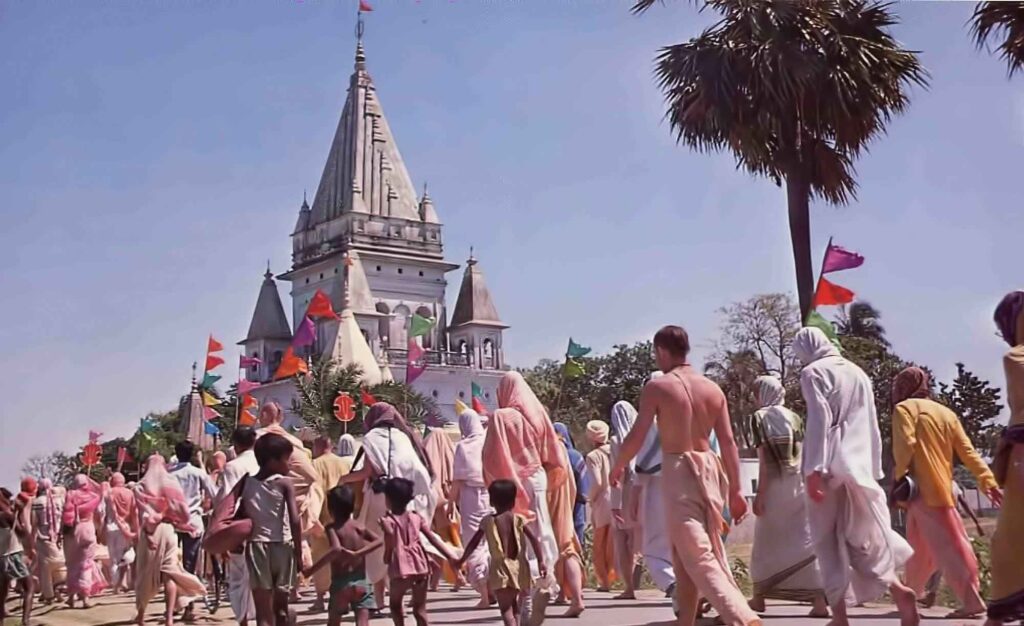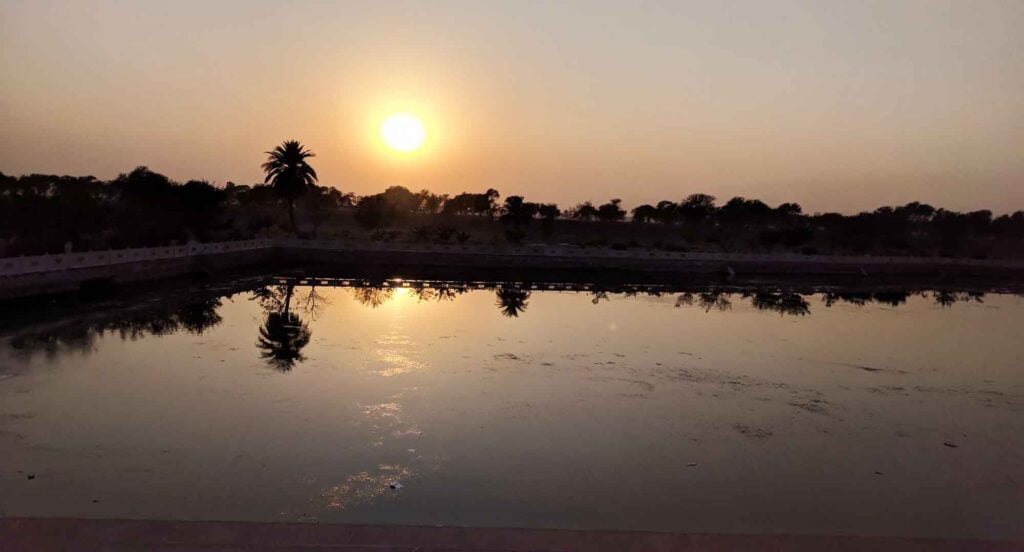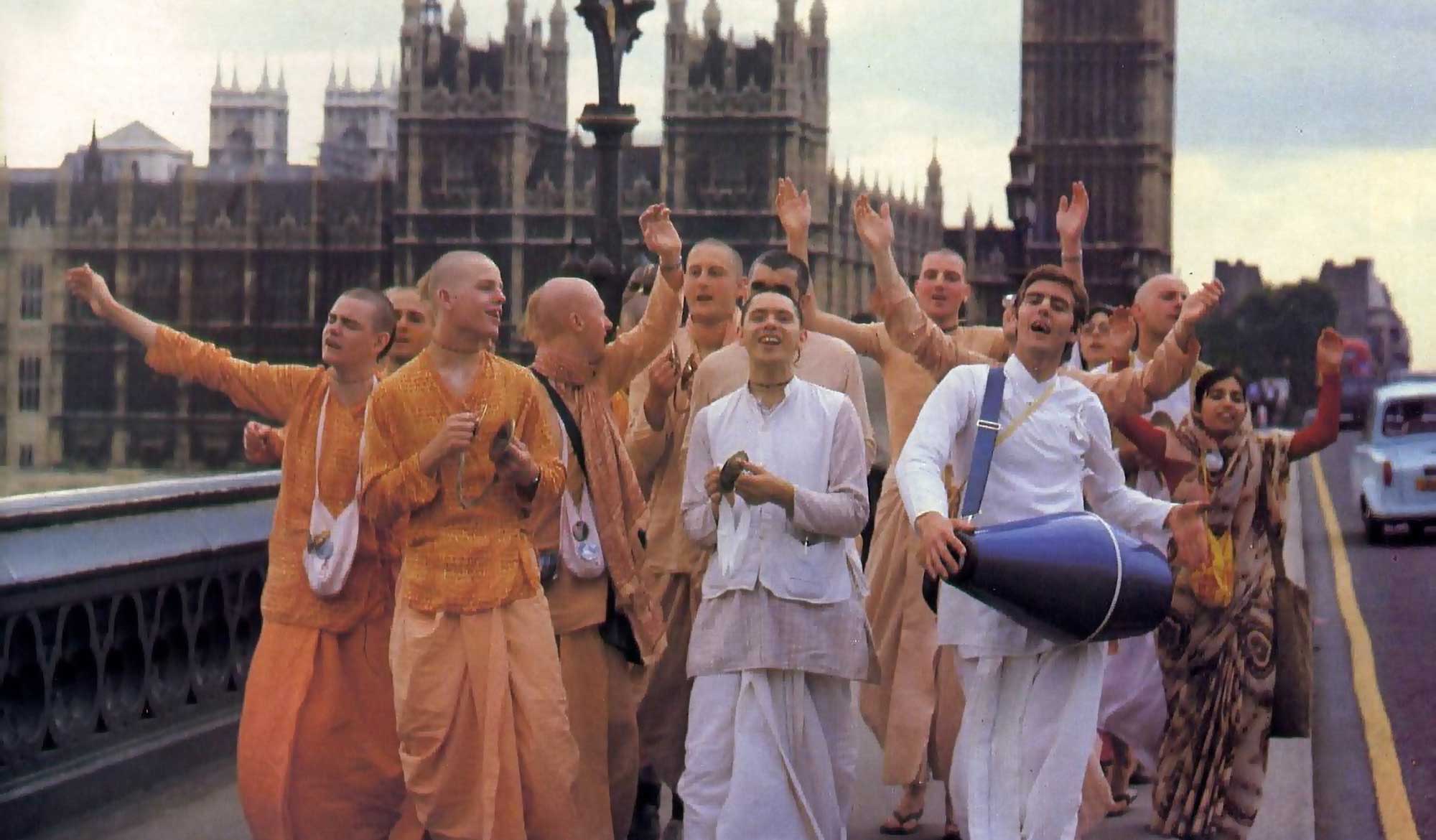Overview
‘Śrī Śrī Rūpa Gosvāmī Prabhu,’ first published by Bhaktivinoda Ṭhākura in Sajjana Toṣaṇī Vol.2. issue 8 in 1885, is a brief biography of Śrīla Rūpa Gosvāmī. The Ṭhākura gives a list of some of the literary achievements of Śrī Rūpa, and laments how various apa-sampradāyas make claim to many great ācāryas.
(translated by Swami B.V. Giri)
The eighth issue of Sajjana Toṣaṇī has been published. The name of this issue is the ‘Śrī Rūpa Issue.’ Saturday 7th of Bhādra of the current year is the disappearance observance of Śrī Śrī Rūpa Gosvāmī Prabhu. Those Vaiṣṇavas who are maddened by the nectar of the lotus feet of Śrī Gaurāṅga, commemorate an observance of separation on this day. Rūpa Gosvāmī was attached to Śrī Śrī Rādhā-Kṛṣṇa from his childhood. He gained special honour in the scholarly community by going through the traditional academic rigors. His worldly knowledge was also amazing, so Hussein Shah, the king of Gauḍa, appointed him as chief executive. Although Rūpa was appointed as an employee of the ruler of Gauḍa, he did not give up bhajana of Śrī Śrī Rādhā-Kṛṣṇa. He made a kadamba forest near his house in the village of Rāmakelī, adorned with two ponds, Rādhā-kuṇḍa and Śyāma-kuṇḍa, where at certain times, he used to do bhajana of Śrī Śrī Rādhā-Kṛṣṇa with his elder brother. From the day that Rūpa heard the name of Śrī Śrī Śacīnandana Mahāprabhu, the Moon of Navadvīpa, the yearning for Mahāprabhu’s darśana afflicted his heart. Being the indwelling monitor of all, and thoroughly knowing his devotees, Caitanyadeva knew Rūpa’s mind, and on His way to Śrī Vṛndāvana, He arrived in the village of Rāmakelī and gave darśana to Rūpa. Upon having darśana of Mahāprabhu, Rūpa felt that his life was successful, and he was submerged in an ocean of bliss. Māyā can never bind the devotees of Kṛṣṇa who are eternally liberated. Within just a few days, throwing a broom in the face of material happiness, Rūpa went to Prayāga Tīrtha with great renunciation, and fell down at the feet of Mahāprabhu. Mahāprabhu bestowed due mercy upon Rūpa, gave him instructions on rasa-tattva, and sent him to Śrī Vṛndāvana to discover the lost holy places. Rūpa, taking the permission of Mahāprabhu on his head, went to Vṛndāvana where he met with the devotees, and remaining in Vraja, he discovered the lost holy places and established service to the Deities. Then, according to the teachings of Mahāprabhu which are replete with śrīmad-bhagavata-bhakti, and with a desire to benefit of the unrighteous suffering jīvas of the age of Kali, he wrote the books Bhakti-rasāmṛta-sindhu, Laghu-Bhāgavatāmṛta, Haṁsadūta, Uddhava Sandeśa, Kṛṣṇa-Janma-tīthi Vidhi, Laghu and Bṛhat Gaṇoddeśa Dīpikā, Stava-mālā, Vidagdha Mādhava, Lalita Mādhava, Dāna-kelī Kaumudī, Ujjvala-Nīlamaṇi, Prayuktākhya Candrikā, Mathurā-Mahimā, Padyāvalī, and Nāṭaka-candrikā.
Gaurāṅgadeva, the saviour of the fallen, preached humility through Rūpa-Sanātana, detachment through Svarūpa Dāmodara, tolerance through Brahma Hari Dāsa, and control of the senses through Rāya Rāmānanda. According to the statements of some devotees, Mahäprabhu propagated līlā-tattva through Rūpa, bhakti-tattva through Sanātana, nāma-tattva through Brahma Hari Dāsa, and prema-tattva through Rāya Rāmānanda. Anyhow, in this regard, we have no arguments. However, it is a sad thing that neḍās, bāulas, karttābhajās, rasika-śekharas, sahajiyās etc. have lied and declared that these mahātmās are ācāryas of their own sects, and thus the majority of cultured persons do not have faith in pure Vaiṣṇava dharma propagated by Mahāprabhu.













